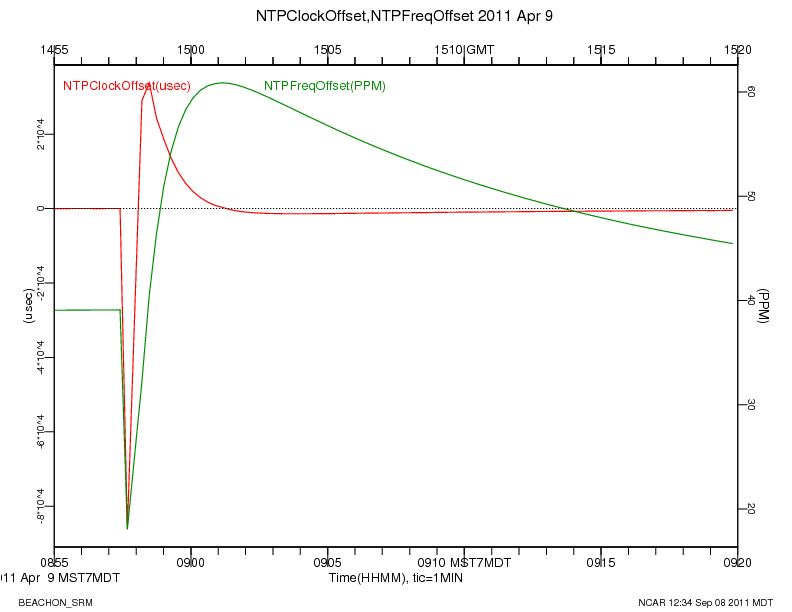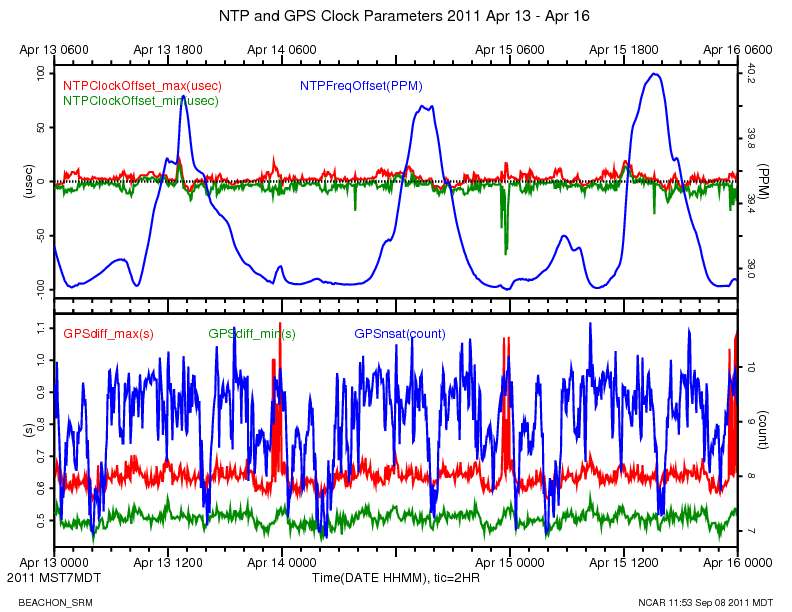Monitoring the accuracy of the system clock on a real-time data acquisition system provides useful information about the performance of the system. Hence this long discussion.
...
The following plot shows a close up of one of the clock offset spikes using un-averaged data:
At these moments, NTP estimates The sudden downward jump in NTPClockOffset causes NTP to think that the GPS clock is earlier than the system clock, and . NTP starts to correct for the error offset by slowing down the system clock, due to as seen in the negative spikes in NTPClockOffsetvalues for NTPFreqOffset. When the GPS recovers from its delayed reporting, NTP then sees positive values for NTPClockOffset and adjusts the system clock ahead.
After installing 18x-LVC, the NTPClockOffset is in a much improved range, from -70 to 25 microseconds:
GPSdiff is also much better behaved, ranging from a minimum of 0.5 to 1.1 seconds. The number of satellites tracked by the new GPS is also generally higher.
Temperature Effects
As expected, the The frequency offset shows a temperature dependence in the system clock oscillator. We do not measure the temperature inside the data system box at the base of the tower. The nearest temperature measurement is of the ambient air at 2 meters on up the tower. The top panel in the plot below shows a time series of the air temperature, along with NTPFreqOffset, for a cool 3 day period in April, after the installation of the new GPS. It appears that when the air temperature is below 5 deg C, the system clock oscillator does not show an obvious temperature relation.
...

